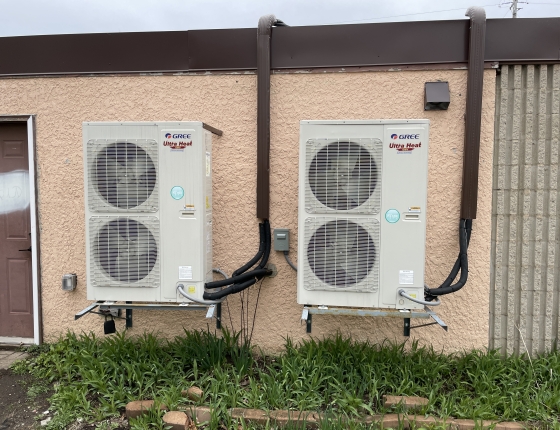This post complements our quarterly research newsletter, which features updates on CEE's research projects. Sign up to get this information in your inbox.
Variable Refrigerant Flow Field Study
Background: One promising solution to make buildings more efficient is the variable refrigerant flow (VRF) system, an all-ele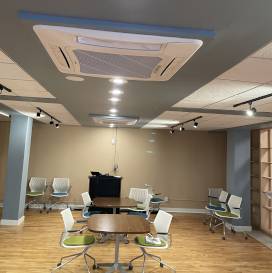 ctric alternative to traditional HVAC systems.
ctric alternative to traditional HVAC systems.
VRF systems work by efficiently moving heat throughout a building via refrigerant as opposed to water or air. Buildings that use VRF can reduce carbon emissions and prepare for a clean energy future. The Minnesota Department of Commerce Conservation Applied Research Development (CARD) has contracted Slipstream, CEE, and LHB to lead its field demonstration of VRF systems in Minnesota.
Update: This study aims to quantify the energy and comfort benefits of VRF systems. The project team is currently seeking demonstration sites. Your building may be a good candidate if:
- It is slated for a full (or majority) building HVAC retrofit
- It has installed an air-source VRF system in the last three years
To nominate your building for this study, email Russ Landry at rlandry@mncee.org or submit on Slipstream’s website.
This project is supported by a grant from the Minnesota Department of Commerce, Division of Energy Resources through the Conservation Applied Research and Development (CARD) program, which is funded by Minnesota ratepayers.
Assessment of Heat Pump Clothes Dryers
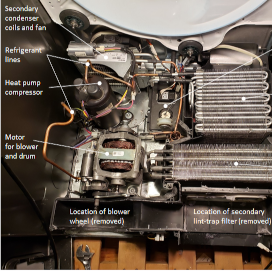 Background: Clothes dryer technology in the upper Midwest has changed very little since they were first introduced in the 1940s. Heat pump clothes dryers have the potential to save significant electrical energy by pulling air from the surrounding space to heat clothes, as opposed to electric resistance. This field study of heat pump clothes dryers sought to better understand the direct and indirect energy savings from this technology as they are used in actual Minnesota homes.
Background: Clothes dryer technology in the upper Midwest has changed very little since they were first introduced in the 1940s. Heat pump clothes dryers have the potential to save significant electrical energy by pulling air from the surrounding space to heat clothes, as opposed to electric resistance. This field study of heat pump clothes dryers sought to better understand the direct and indirect energy savings from this technology as they are used in actual Minnesota homes.
Update: CEE recently conducted a final report on the in-home and lab testing of heat pump clothes dryers. For in-home testing, the study monitored consumers’ existing dryers for a few months and then installed heat pump clothes dryers to compare performance. Consumers saved a significant amount of energy with the new dryers, around 20% on average. Despite consumer perceptions to the contrary, the heat pump clothes dryers’ smaller capacity was sufficient for nearly all home laundry load sizes. In lab testing, energy performance was not dependent on specific dryer settings, which means consumers can select cycles that suit their needs without impacting energy efficiency.
Learn more on the project page
This project is supported by a grant from the Minnesota Department of Commerce, Division of Energy Resources through the Conservation Applied Research and Development (CARD) program, which is funded by Minnesota ratepayers.
High-Performance Envelope Retrofits
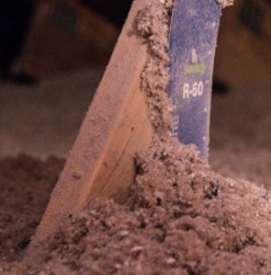 Background: The largest energy burden in Minnesota is heat loss through the envelope of existing single-family homes. This market study aims to define enhanced envelope retrofit packages. The study will also identify opportunities to strategically leverage existing market channels to cost-effectively reduce envelope losses. Researchers will quantify new opportunities and market channels that can incorporate existing residence envelope retrofits at lower incremental cost to offer existing buildings a feasible pathway to high performance.
Background: The largest energy burden in Minnesota is heat loss through the envelope of existing single-family homes. This market study aims to define enhanced envelope retrofit packages. The study will also identify opportunities to strategically leverage existing market channels to cost-effectively reduce envelope losses. Researchers will quantify new opportunities and market channels that can incorporate existing residence envelope retrofits at lower incremental cost to offer existing buildings a feasible pathway to high performance.
Update: Most single-family housing stock built before 1990 requires one or more weatherization upgrade to meet current standards, which would lead to an average of 20% savings in natural gas use. Including exterior insulation and window updates during strategic times like home renovation can provide up to an additional 40% savings. Still, conventional weatherization measures typically remain the most cost-effective building envelope upgrade. Cost-effectiveness and energy savings vary substantially from building to building in the existing housing stock; however, high-performance envelope retrofits are highly cost-effective on about 10% of the existing building stock. Future work must focus on differentiation to identify buildings and projects that maximize both potential energy savings and cost-effectiveness.
Learn more on the project page
This project is supported by a grant from the Minnesota Department of Commerce, Division of Energy Resources through the Conservation Applied Research and Development (CARD) program, which is funded by Minnesota ratepayers.
Residential Zoned Air Distribution Systems
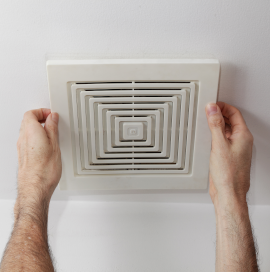 Background: Single-zone constant air volume systems, standard in most Minnesota homes, can lead to uncomfortable temperature variations and increased energy use from over-heating and over-cooling. Multizone systems use automated dampers to supply air only to the parts of the house where it is needed. This study will assess the energy savings opportunities for residential zoned air distribution systems. CEE will use EnergyPlus models of standard Minnesota home configurations to estimate zoned system energy savings.
Background: Single-zone constant air volume systems, standard in most Minnesota homes, can lead to uncomfortable temperature variations and increased energy use from over-heating and over-cooling. Multizone systems use automated dampers to supply air only to the parts of the house where it is needed. This study will assess the energy savings opportunities for residential zoned air distribution systems. CEE will use EnergyPlus models of standard Minnesota home configurations to estimate zoned system energy savings.
Update: The literature identified in the study emphasizes multizone systems’ potential to reduce cooling energy loads, but with fewer potential reductions in space heating savings. Through interviews with distributors, contractors, and U.S. utilities, CEE found that energy efficiency incentives for multizone systems, which are not currently provided by utilities, would help increase market penetration. To continue this research, CEE has started modeling residential single and multizone systems and will develop two to four prototype Minnesota single-family houses. These prototypes will evaluate the change in energy use and improved comfort of both single-zone constant air volume and multizone distribution systems.
Learn more on the project page
This project is supported by a grant from the Minnesota Department of Commerce, Division of Energy Resources through the Conservation Applied Research and Development (CARD) program, which is funded by Minnesota ratepayers.
